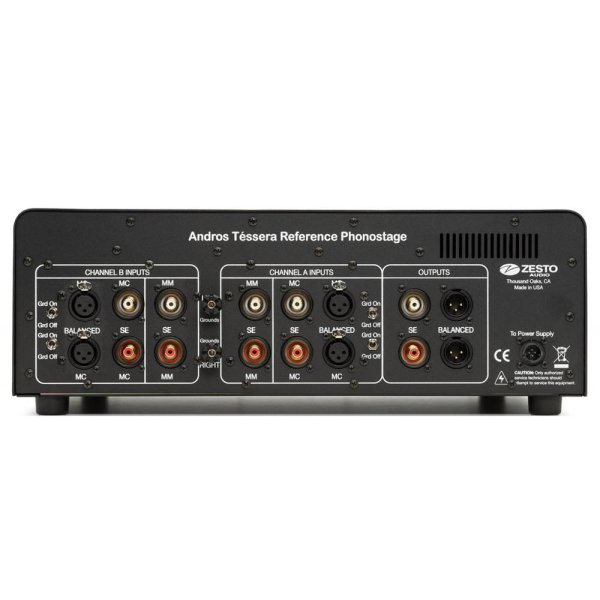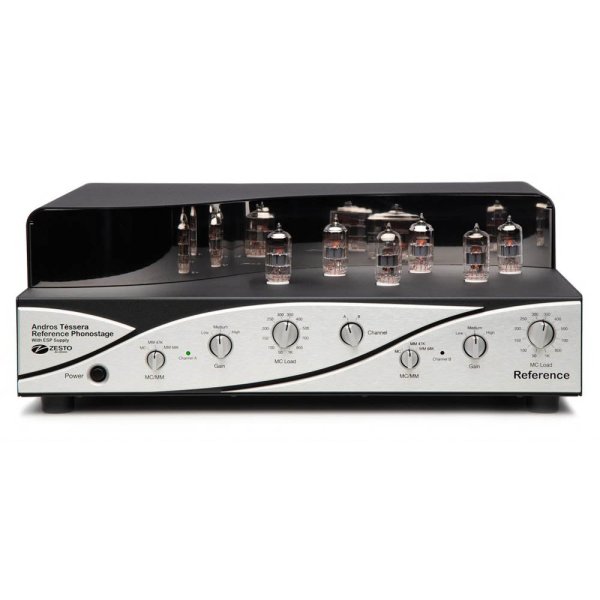strange that JW cannot tell what inherently wrong with it and give a hint on what to fix that...
Tube based phono preamp (tube rectification) with balanced inputs and outputs
- Thread starter sstalwar
- Start date
You are using an out of date browser. It may not display this or other websites correctly.
You should upgrade or use an alternative browser.
You should upgrade or use an alternative browser.
On mine it has not been a single problem, more a series of breakdowns related to high voltage, unstable heater systems resulting in EL 34 failures and subsequent mosfet/ diode failures, with a circuit board melt down also for good measure. A infant mortality tube failure recently can not really be blamed on the Io.strange that JW cannot tell what inherently wrong with it and give a hint on what to fix that...
I bet the brakedowns are related to each other in the long run
a well designed product won´t behave like that...it´s like a hardtuned race machine and working on "the edge" the whole time
a well designed product won´t behave like that...it´s like a hardtuned race machine and working on "the edge" the whole time
On mine it has not been a single problem, more a series of breakdowns related to high voltage, unstable heater systems resulting in EL 34 failures and subsequent mosfet/ diode failures, with a circuit board melt down also for good measure. A infant mortality tube failure recently can not really be blamed on the Io.
My Io pretty much had the same problems!
Oops sorry about that. See, balanced phono inputs are rare .Thanks guys. EAR 88PB does not have balanced input. My j Sikora KV12 Max arm has integrated balanced cable. Also, I find Allnic little too lean as well… just going by monoblock amplifiers that I owned in past. I will look into Modwright PH9. Wonder if anyone has experience with modwright and BAT P12se and atmosphere. How would you describe the sonics relative to each other. I do need quiet and warm - full body presentation with all balanced interface. Purely reading forum impressions, Aesthetix may not excel in quietness and ARC may be little too neutral / lean. Thanks for the insight you guys might have.
Agreed, a lot of components seem to be running at close to max. I love the sound of it when it is working properly, i hope my repair guy lives a long healthy life ! And i die before him !I bet the brakedowns are related to each other in the long run
a well designed product won´t behave like that...it´s like a hardtuned race machine and working on "the edge" the whole time
Last edited:

ZESTO AUDIO ANDROS TÉSSERA REFERENCE - PHONO STAGE
Key Features For A Quieter and More Musical Phonostage Musical Features Completely new 100% tube analog circuit design with optimized components. Dynamic range increased from 108dBV to 116dBV, so the quietest parts are quieter, louder parts are louder. Loading on the secondary of the MC...


Last edited:
Aesthetix is a no go. I have had Mimas and their monoblock amplifiers.. broken so many times and dealing with the company is not what I cherish. Noisier on top…
Another satisfied customer !Aesthetix is a no go. I have had Mimas and their monoblock amplifiers.. broken so many times and dealing with the company is not what I cherish. Noisier on top…
when he was rid of the damn thing.....Another satisfied customer !
Is that the high and the low of it?My Io pretty much had the same problems!
I am only seeing the low points so far.
Is that the high and the low of it?
I am only seeing the low points so far.
The high points as well, I love the sound of the Io, so much that I just got myself a second set, this time the 120V version, so hopefully more reliable! Also yes, I too have a good repair technician, who is very familiar with the Io’s circuit by now
The signal from a vinyl cartridge or a magnetic head is more correctly called a differential signal (https://en.wikipedia.org/wiki/Differential_signalling). When signal connected to a balanced amplifier, it becomes balanced, and when connected to an SE amplifier (one conductor is connected to ground), the signal becomes SE.Having the XLR phono input requirement is very unusual, albeit given that a phono cartridge is an inherently balanced device. It will accomodate 0.2mv+ moving coils as well as MM cartridges.
But connecting a differential signal to a balanced amplifier has a very unpleasant feature: the amplitude of the signal at the amplifier inputs is divided proportionally to their input resistance, in a balanced amplifier in half. That is, 5 mV comes from the cartridge, and at the inputs of the balanced amplifier we have 2.5 mV each.
These 2.5 mV need to be amplified to the level that the SE amplifier gives with 5 mV at the input (we use the same differential signal). That is, the balanced amplifier must have 2 (6 dB) times more amplification. But along with the useful signal, noise is also amplified. Therefore, the signal-to-noise ratio at the output of the balanced amplifier will be 6 dB worse.
Is ^the noise^ “common mode” or not?The signal from a vinyl cartridge or a magnetic head is more correctly called a differential signal (https://en.wikipedia.org/wiki/Differential_signalling). When signal connected to a balanced amplifier, it becomes balanced, and when connected to an SE amplifier (one conductor is connected to ground), the signal becomes SE.
But connecting a differential signal to a balanced amplifier has a very unpleasant feature: the amplitude of the signal at the amplifier inputs is divided proportionally to their input resistance, in a balanced amplifier in half. That is, 5 mV comes from the cartridge, and at the inputs of the balanced amplifier we have 2.5 mV each.
These 2.5 mV need to be amplified to the level that the SE amplifier gives with 5 mV at the input (we use the same differential signal). That is, the balanced amplifier must have 2 (6 dB) times more amplification. But along with the useful signal, noise is also amplified. Therefore, the signal-to-noise ratio at the output of the balanced amplifier will be 6 dB worse.
I assume you mean just the noise of the motor (coil)?
I mean the inherent noise of the RIAA preamp input stage.Is ^the noise^ “common mode” or not?
I assume you mean just the noise of the motor (coil)?
The signal from a vinyl cartridge or a magnetic head is more correctly called a differential signal (https://en.wikipedia.org/wiki/Differential_signalling). When signal connected to a balanced amplifier, it becomes balanced, and when connected to an SE amplifier (one conductor is connected to ground), the signal becomes SE.
But connecting a differential signal to a balanced amplifier has a very unpleasant feature: the amplitude of the signal at the amplifier inputs is divided proportionally to their input resistance, in a balanced amplifier in half. That is, 5 mV comes from the cartridge, and at the inputs of the balanced amplifier we have 2.5 mV each.
These 2.5 mV need to be amplified to the level that the SE amplifier gives with 5 mV at the input (we use the same differential signal). That is, the balanced amplifier must have 2 (6 dB) times more amplification. But along with the useful signal, noise is also amplified. Therefore, the signal-to-noise ratio at the output of the balanced amplifier will be 6 dB worse.
That is intersting. I have a rudimentary understanding.
What I know from reading: it is correct to say a MC stereo cartridge is an inherently balanced component. The signal is isolated from the cartridge's chassis ground.
The rule I learned to follow is that the phonostage input impedance should be at least 10X the output impedance of the MC cartridge to mitigate the voltage divider effect.

True Balanced FAQs - Pro-Ject Audio USA
Browse Pro-Ject Audio's True Balanced frequently-asked questions (FAQs) for education on how & why to make the biggest upgrade to your turntable system yet
 pro-jectusa.com
pro-jectusa.com
Or Google: "is a stereo cartridge a balanced device"
So let's start with the terms and definitions.That is intersting. I have a rudimentary understanding.
What I know from reading: it is correct to say a MC stereo cartridge is an inherently balanced component. The signal is isolated from the cartridge's chassis ground.
The rule I learned to follow is that the phonostage input impedance should be at least 10X the output impedance of the MC cartridge to mitigate the voltage divider effect.

True Balanced FAQs - Pro-Ject Audio USA
Browse Pro-Ject Audio's True Balanced frequently-asked questions (FAQs) for education on how & why to make the biggest upgrade to your turntable system yetpro-jectusa.com
Or Google: "is a stereo cartridge a balanced device"
Noise is the hissing and gurgling that you can barely hear when you put your ear to a speaker.
When you put your ear to a speaker and hear 50 or 60 Hz, depending on the country you are in, this is called hum.
Balanced connection makes the signal-to-noise ratio 6 dB worse. In a quality audio system, hum is taboo, so I'm surprised you gave this link. The pictures there show that they are fighting at a frequency of 50 Hz.
Balanced connection is designed to combat hum, but it is relevant for long distances: transmitting signals from the stage to the mixer or from the recording studio to tape recorders, etc. For home use, this is not relevant, the inter-unit cables are short and there is no hum. Therefore, for a RIAA preamp, using an input RCA cable is a more correct solution.
I second this recommendation. I have an MP-3 and it’s better than others I’ve tried and Ralph is usually happy to oblige with modifications that suit his designs, like additional inputs and outputs where possible.The Atma-Sphere phono preamps would meet your specifications. Ralph uses a true balanced phono input.
Atma-Sphere MP-3
Hi-End tube preamplifier featuring Balanced Differential Design. High end balanced valve preamplifier for demanding audiophiles.www.atma-sphere.com
Atma-Sphere MP-1
Hi-End tube preamplifier featuring Balanced Differential Design. The best tube preamplifier worldwide featuring a patented direct-coupled balanced output.www.atma-sphere.com
I deviated from my original quest for tube phono. I have decided to get Gryphon Legato. I listening briefly BAT tube phono and thought it sounded little softer. In my system with other Gryphon components, I figured Legato would be more synergistic and quieter. I shall have it next week. Can’t wait… Thanks to everyone.
Hi sstalwar, congratulations on the Legato, it is my favourite SS phono! The only troublesome part with it is the LEMO balanced input, you need either an adaptor or a specially terminated phono cable. As I understand, if you buy new, you can order it with XLR input instead of LEMO. So, did you get it with LEMO or XLR input?
Similar threads
- Replies
- 6
- Views
- 1K
- Replies
- 39
- Views
- 3K
- Replies
- 11
- Views
- 2K
- Replies
- 5
- Views
- 3K
- Replies
- 22
- Views
- 6K
| Steve Williams Site Founder | Site Owner | Administrator | Ron Resnick Site Owner | Administrator | Julian (The Fixer) Website Build | Marketing Managersing |








